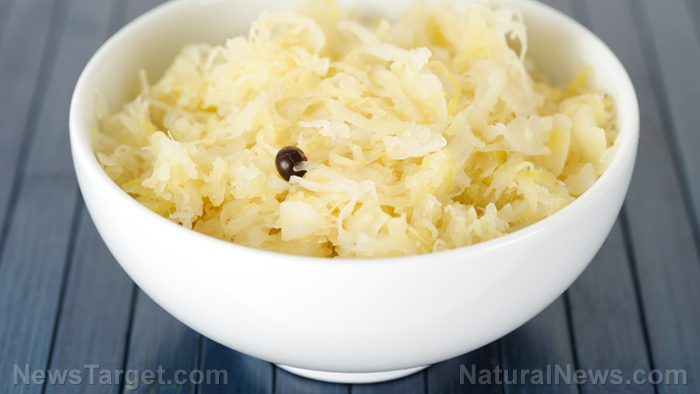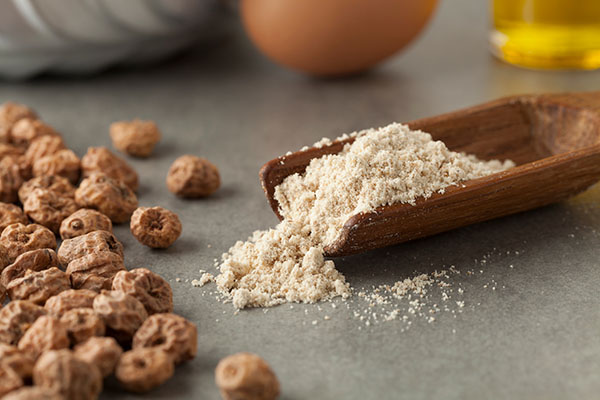
Advertisement
Knowing recipes for delicious, nutritious superfoods ensures that you can keep your family healthy throughout the year. To boost your vitamin C intake, learn how to make sauerkraut, a nutritious fermented side dish and condiment.
Health benefits of sauerkraut, a fermented food full of vitamin C
Vitamin C is an essential nutrient that helps boost your immune system. The vitamin also has a role in collagen production, the primary protein in your body’s connective tissues.
Vitamin C deficiency, on the other hand, makes you more vulnerable to common illnesses like a cold.
With this in mind, you should make it a point to eat foods rich in vitamin C, like sauerkraut. In addition to its vitamin C content, sauerkraut is also rich in other nutrients.
A one-cup serving of sauerkraut contains the following nutrients:
- 27 Calories
- Vitamin C (23 percent of the DV)
- Carbs (6 grams)
- Fiber (4 grams)
- Protein (1 gram)
- Sodium (41 percent of the Daily Value [DV])
- Copper (15 percent of the DV)
- Vitamin K1 (15 percent of the DV)
- Iron (12 percent of the DV)
- Vitamin B6 (11 percent of the DV)
- Folate (9 percent of the DV)
- Manganese (9 percent of the DV)
- Potassium (5 percent of the DV)
Take note that homemade sauerkraut contains vitamin C, remember that it’s also high in sodium. To limit your intake of sodium, rinse each serving before eating.
Lacto-fermentation and shelf-stable sauerkraut
Sauerkraut won’t spoil even when stored at room temperature because the acidic brine inhibits the bacteria that spoils regular foods. Prepared and properly, sauerkraut will keep for months.
Like other leafy greens, fresh cabbage contains vitamin C. However, sauerkraut contains more vitamin C than raw cabbage because of the fermentation process.
It’s this fermentation process that makes sauerkraut particularly nutritious. During process during which microorganisms on the cabbage digest its natural sugars and convert them into carbon dioxide and organic acids, such as lactic acid. The microbes that create lactic acid also produce vitamin C as a byproduct, along with traces of vitamins A and B.
Fermentation starts when yeast and bacteria that are naturally present on the cabbage, your hands and in the air come into contact with the sugars in the cabbage. The sauerkraut fermentation process creates conditions that promote the growth of beneficial probiotics that you can also find in other superfoods like yogurt and kefir.
Probiotics are bacteria with many health benefits, like making foods more digestible. This increases your gut’s ability to absorb the vitamins and minerals in food that you eat.
How to make sauerkraut at home
To make sauerkraut, you’ll need fresh cabbage and non-iodized salts like sea salt or canning salt to make sauerkraut. Follow the ratio of three tablespoons of salt to five pounds of cabbage.
Not using enough salt can allow rot-causing bacteria to stay alive and ruin your recipe. If you’re worried about the salt content of the sauerkraut, follow the recipe but rinse the sauerkraut with clean water before serving to limit your sodium intake.
Tools:
- Food-grade plastic bucket
- Ceramic crock
- Fermentation disks/weights
- Mason jars
Preparation:
- Chop the cabbage into thin slices. This exposes more surface area to the salt.
- Sprinkle salt on the shredded cabbage as you put them into the plastic bucket. Don’t use aluminum containers because the metal will react with the lactic acid. A three-gallon food-grade plastic bucket can store about ten pounds of shredded cabbage before compression. While adding the shredded cabbage, sprinkle the salt a layer at a time. This is easier than trying to stir a bucket of shredded cabbage with the salt dumped on top.
- Stir the bucket full of cabbage shreds and the salt. This will ensure that the salt is evenly distributed among the shreds.
- Press the weighted disk on top of the cabbage shreds. If you don’t have a fermentation weight, use a clean dinner plate that will fit inside the bucket. Press down on the plate to squeeze out the air. Once compressed, the sauerkraut will fill about a quarter of the bucket.
- Store the bucket in a room with a moderate temperature like 65 F. Keeping the bucket in a warmer room with help make the fermentation go faster and a cooler place will slow it down. Check the sauerkraut regularly during the two-week fermentation process.
- After several days, the brine will have risen up around the edges of the weighted disk. Press down on the disk periodically to compress the sauerkraut and remove any air pockets.
- After one week, you can start smelling odors due to the fermentation and see little patches of foam around the edges. If you see little floating dots of mold after a week or so, remove the mold with a spoon so it doesn’t multiply. Any organic matter that is exposed to the air is vulnerable to mold, but the mold doesn’t mean your batch has gone bad. Mold will usually form if the cabbage isn’t fully submerged or if it’s too hot in your kitchen. The sauerkraut is still fine because it’s still preserved by the lactic acid, but use your best judgment when fermenting. If the batch smells or tastes moldy or unappetizing, it’s best to get rid of it and try again.
- After two weeks, the sauerkraut should be sufficiently fermented and ready to be stored in jars. Before you remove the weighted disk, remove any last bits of dried foam and mold so they don’t contaminate the rest of the sauerkraut after you remove the weight.
- Scoop the sauerkraut into clean Mason jars. Use pint jars for small family side dish servings. Quarts are better if you’re cooking a larger serving using the sauerkraut. Pack the sauerkraut tightly into the jars so the brine rises up to within an inch of the jar rim. Packing squeezes out the air that gets in during packing. If you have some brine left after filling the jars with sauerkraut, pour the brine into other “dry” jars.
- Screw on lids before storing the jars. Sauerkraut doesn’t require a hot water bath treatment like regular canning since it’s preserved because of the lactic acid. You can also vacuum seal the jars to ensure a good seal for storage.
- Store the jars in a dark and cool spot like a root cellar or a cool garage. Under 60 F, the fermentation process stops and helps the sauerkraut stay crunchy longer. Over 60 F, the fermentation resumes within the jars. If sauerkraut ferments longer, the final product is softer and has a stronger taste.
Grow cabbages in your home garden and make sauerkraut so you can have a natural and tasty source of vitamin C the whole year-round.
Sources:
Advertisements







